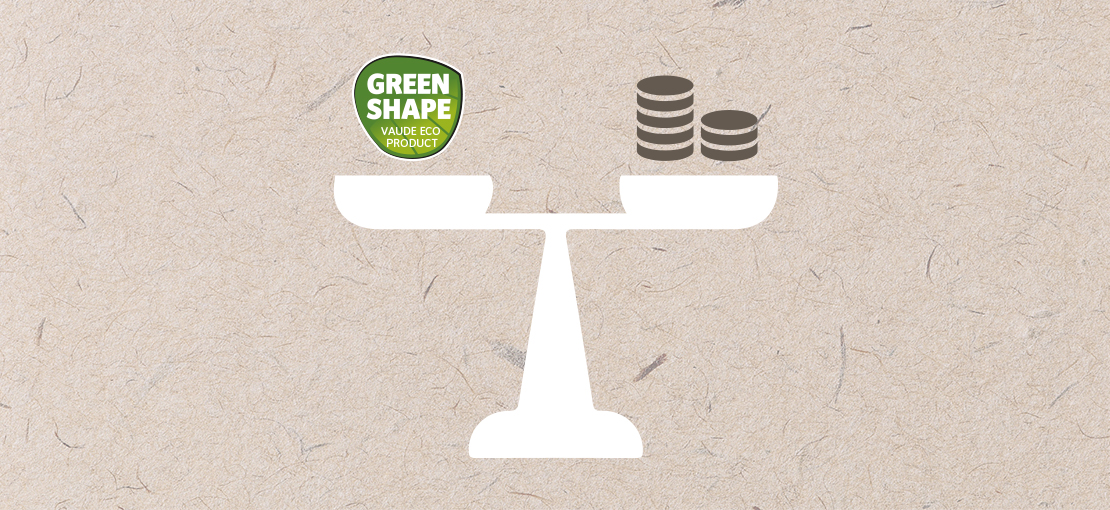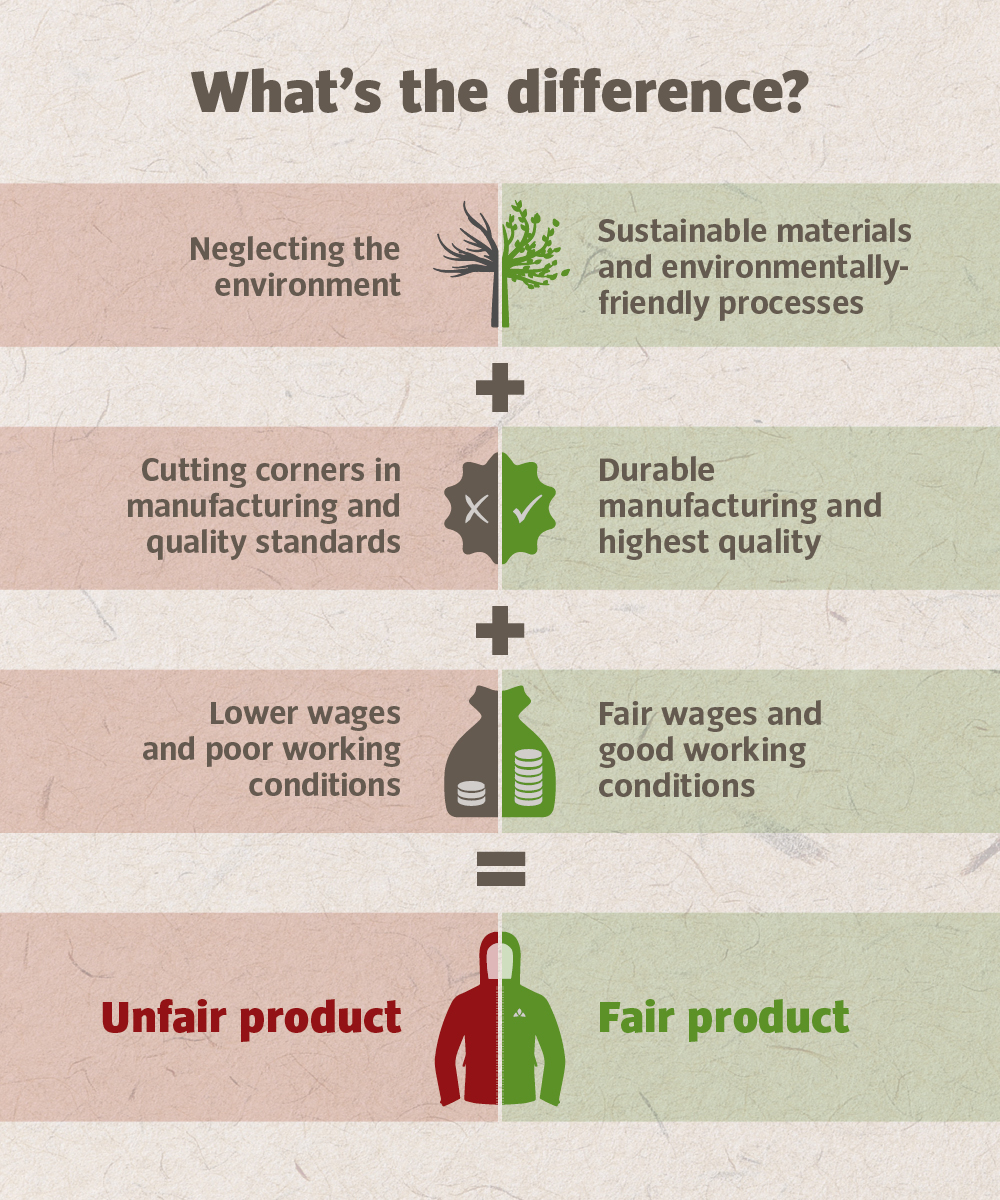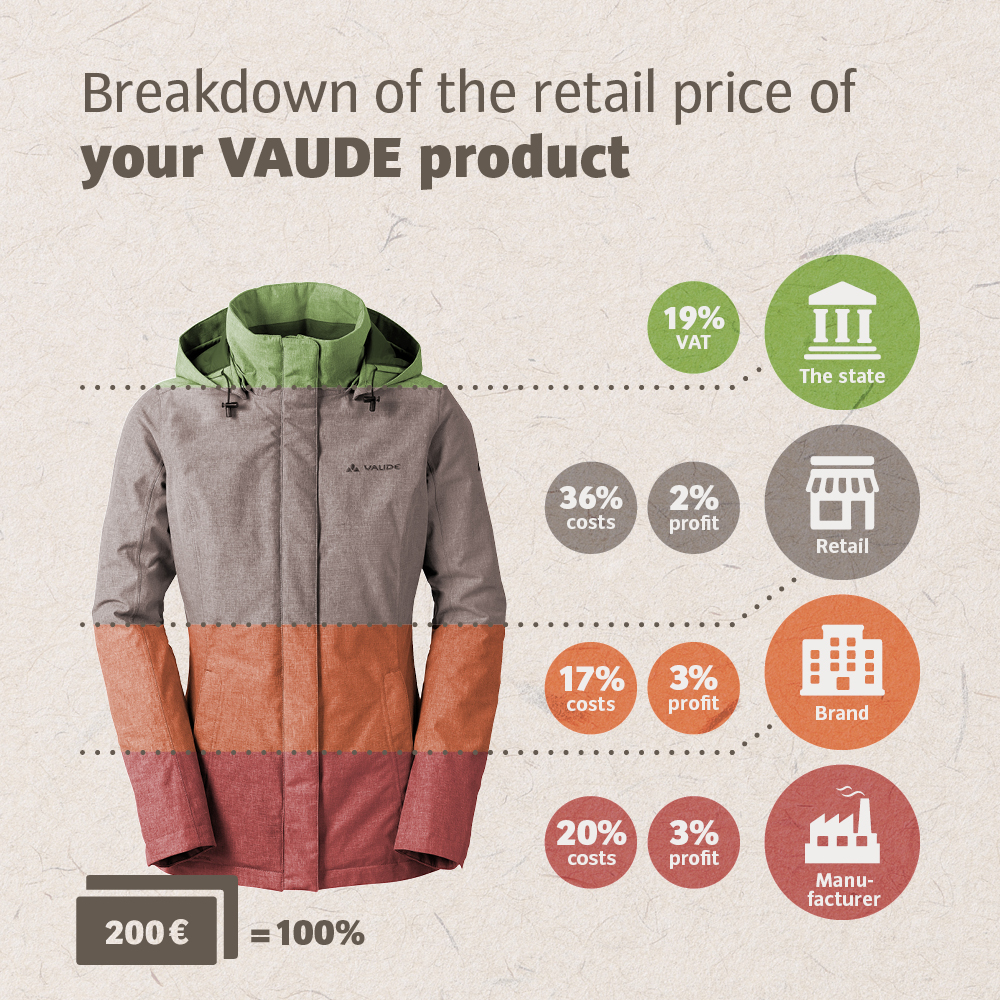
Fair products at fair prices
Fair? Inexpensive? Good quality? – What factors do you consider?
Money makes the world go around. This old saying defines our economic systems and our daily consumption. In the pervasive overabundance of products, price is often the most important factor when deciding on any purchase. This goes for fashion as well as outdoor clothing and equipment.
But what constitutes a fair price? To whom is it fair? And, as a customer, when do you accept for example, that a lower price is only possible at a cost to the environment or the people who work in the manufacturing process? What standards of quality can you expect for a specific price and what costs and profits are hidden within the retail price?

These are questions that we at VAUDE also deliberate over and we would like to make sure that you can get answers to these questions where VAUDE products are concerned.

»Many people want to shop with a clear conscience. But when it comes to actual purchasing decisions, price still remains the main deciding factor; after all, it is hard to tell what goes in to making a product, just by looking at it. This is where we offer full transparency to our customers in a product’s manufacturing criteria and in this way, foster more conscious shopping behavior. «
What costs and profits are involved in VAUDE retail prices?
Let’s say, you buy a VAUDE jacket in Germany for €200. How much of that price is made up of costs and what does the manufacturer earn? What do we the brand earn from it, or the retailer and even the state (value added tax) earn?
This diagram illustrates the makeup of our retail pricing.

Of the €200 retail price that you pay in-store, 19 % (€38) goes to the state as VAT (value added tax). Expenses such as schools, roads, hospitals, etc. are financed from the state budget. Find out what the state spent taxes on in 2017 here
This means that the retailer retains 81 % (€162) of the €200 that you paid for the jacket. With the remaining money, the retailer buys the jacket from us, the brand, at about 45 % (€90) of the retail price. The retailer also has costs such as employees, rent, energy bills etc. They make up roughly 36 % (€72) of the retail price. The profit remaining for the retailer is about in 3 % (€6) of the of the retail price.
Of the 45 % (€90) of the retail price that we retain after selling the jacket to the retailer, we pay the manufacturer approx. 24 % (€48) of the retail price, and cover our costs for product development, employees, buildings, energy consumption, transport, duties etc. This adds up to about 17 % (€36) of the retail price. Profit makes up around 3 % (€6). The majority of our profits are ploughed back into the business and into our sustainability strategy.
It is important to understand that compared to conventional products, we as a brand incur significantly higher costs for the use of environmentally friendly materials, resource-saving manufacturing processes and for our commitment to fair working conditions in our production facilities. An example: the PVC-free primary fabric used in our Made in Germany bike bags is over 100 % more expensive than PVC fabric – find out more about our PVC-free products here
On the whole, we cannot pass on all the additional costs through the retail price, because there are limits to what price both the trade and the general public will pay for an item. In such cases, we consciously decide to forgo on our share of the profit because we view it as our contribution to the common good. We can only do this if, for example, we refrain from spending marketing budgets on expensive TV advertising or do not pay high dividends to external shareholders.
And the garment manufacturer also has costs for employees, buildings, machines, energy etc. that they must cover in the price we pay them. The manufacturer costs also include upstream supply chain costs of materials. The manufacturer’s profit amounts to roughly 3 % (€6) of the retail price.
An economic system for the benefit of all
We consciously opt for these extra costs, because our understanding of enterprise is to take responsibility for our own actions and to achieve added value for the common good. In other words, running our business in such a way that everyone involved reaps benefits, and not at the expense of the environment. The common good approach to the economy is also enshrined in the German constitution – read the corresponding passages here
But our current economic system does not actually reflect this. Instead it is based purely on financial indicators: commercial success is only measured by economic indicators such as growth in turnover. As a consequence, it is all too often the principle of cutting costs that prevails, in order to be able to offer favorable prices and maximize profits. This usually leads to social and environmental aspects being left by the wayside. The true costs of a product are not taken into account and are not borne by the originator.
That is why we are such fans of the Economy for the Common Good, and as a pioneering business have an audited Common Good balance sheet. The Economy for the Common Good is a vision for a long-standing, stable and fair economic system that respects human rights and the environment. The Common Good audit measures commercial success not only in financial terms but equivalently in social and ecological terms – more on the “Economy for the Common Good”.




